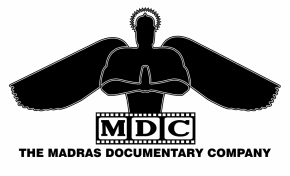MAMALLAPURAM ...a virtual serialized walk through
|
|
Saluvankuppam or Tiger Caves
|
|
|
Saluvankuppam was known in the ancient times as Tiruvilichchalur. A habitation existed around these rocks as a suburb of Mamallapuram. This was attested to in the recent excavation of a brick temple near the northernmost rock. The temple dates back to early centuries of current era. Here, few impressive rocks, jutting from the sandy waste invite the visitors to Mamallapuram even before they enter Mamallapuram. Known popularly as the “Tiger Cave”, there is a rock-cut pavilion and a cave temple known as Atiranchandesvaram, carved out of the rocks. The remaining rocks themselves are wonderfully sculpted by nature, by the strong breeze from the sea over millions of years. While admiring the handy work of nature, shall we see what the Pallava sculptors had done? Tiger Cave – Yali Mandapam This is an impressive excavation on a rock facing the sea. As you see, there is a small pavilion with pillars having rearing lion bases. The pavilion was surrounded by eleven vyala (a mythical figure looking like SALUVANKUPPAM lions) faces. Many wrongly think that they are faces of tiger, hence the name “Tiger Cave”. Locally this place is known as Yali mandapam, Yali derived from Vyala. On the extension of the rock, are two elephants seated with face alone visible. There are two niches over them, as if carried by the elephant. Images are carved in them but they are eroded. Judging from the stylistic grounds, these were carved during the period of Narasimhavarman II Rajasimha who ruled between 700-727 CE. Why this pavilion was made is not certain. Few scholars feel it was temple of Durga. One opines that these were used in the famous annual festival for Indra, which was a celebrated event in ancient India. Walk down further. At the end of this scenic groove is another rock with a cave temple. Atiranachanda Mandapam: As you stroll in the cool shades of casuarinas, to the north, you end up at a cave temple. It has very simple pillars. It is the Atiranachanda Pallavesvara-griham, the house of Isvara of Atiranachanda Pallava. The central sanctum has a representation of Somaskanda, that is Siva, Parvati and their infant son Skanda and a linga with fluted surface. Both are typical of Narasimhavarman II Rajasimha who ruled between 700-727 CE. The temple is very simple. What attracts your attention is the long inscription on its either side? Have a close look of both. Aren’t they written in different scripts? Yes indeed. Are they different records? No. They speak the same verses in Sanskrit. The inscription on your right (if you face the temple) is the form script used for writing in north India. The other on the left is in the Pallava-Grantham, a script devised by the Pallavas for writing Sanskrit verses. The quality of language used is of the highest order. It states that this Sambhor- bhavanam, also calles Atiranchandesvaram was excavated by Atiranachanda, a pet title of Rajasimha, for Sivawith his consort Uma and Skanda and the attendant ganas to take the delight in residing in it. Yet another inscription is engraved on the floor. A close look by will reveal that the script is entirely different. It is the Tamil script of 10th century. It records the donation of 90 sheep for burning of perpetual lamps. From, this we also infer that the temple was under active worship from eighth century to tenth century. On a rock is a depiction of Mahishamardhini, which is Durga killing the bull-demon, Mahisha. It is a poor cousin to the famous depiction at the Mahishamardhini Mandapam. |

